The secrets of our brains
Why squids and flies are smarter than you think.
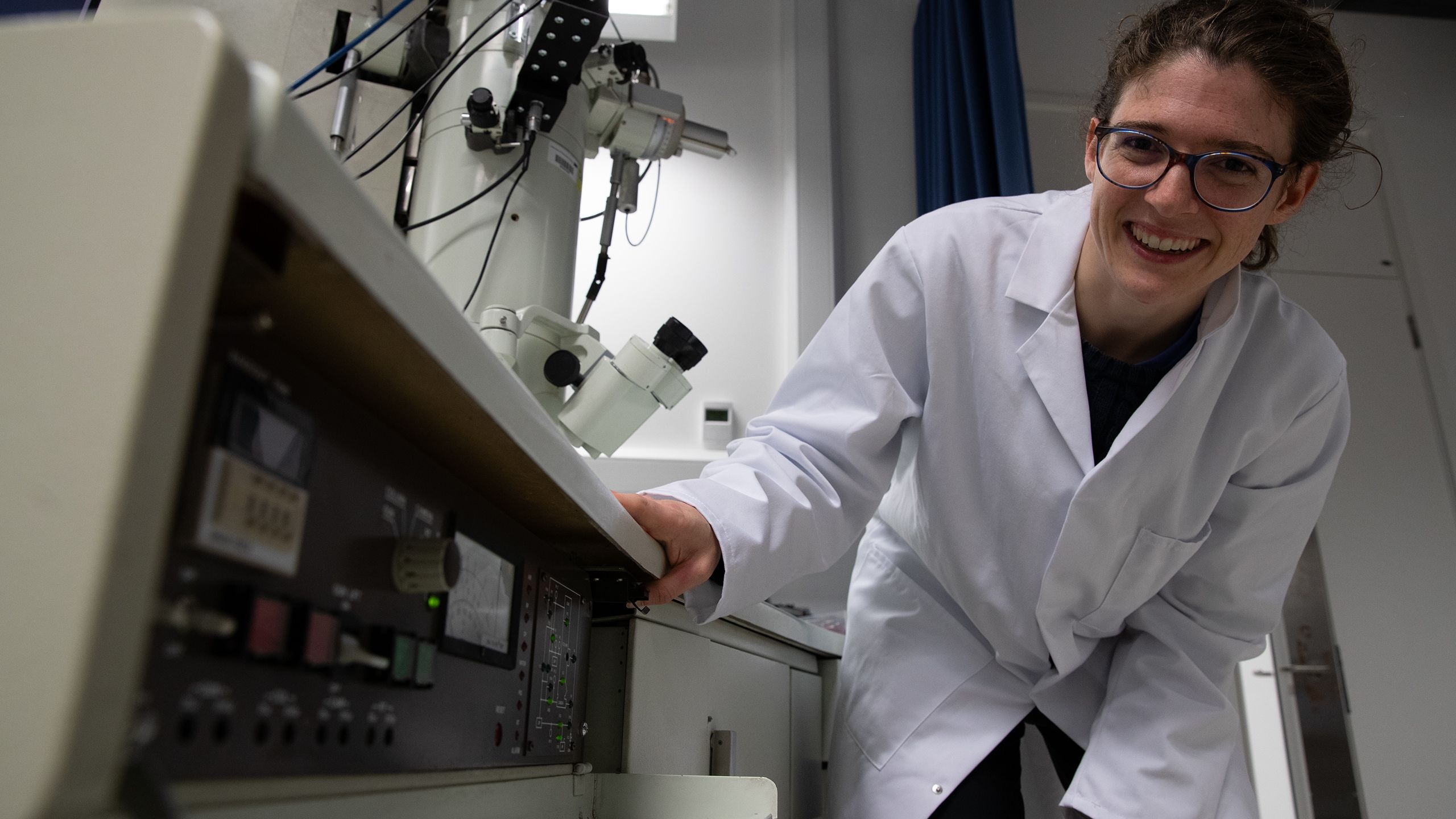
Dr Elizabeth Barsotti is on a mission to map brains from across the animal kingdom. Her work is straight out of science fiction.
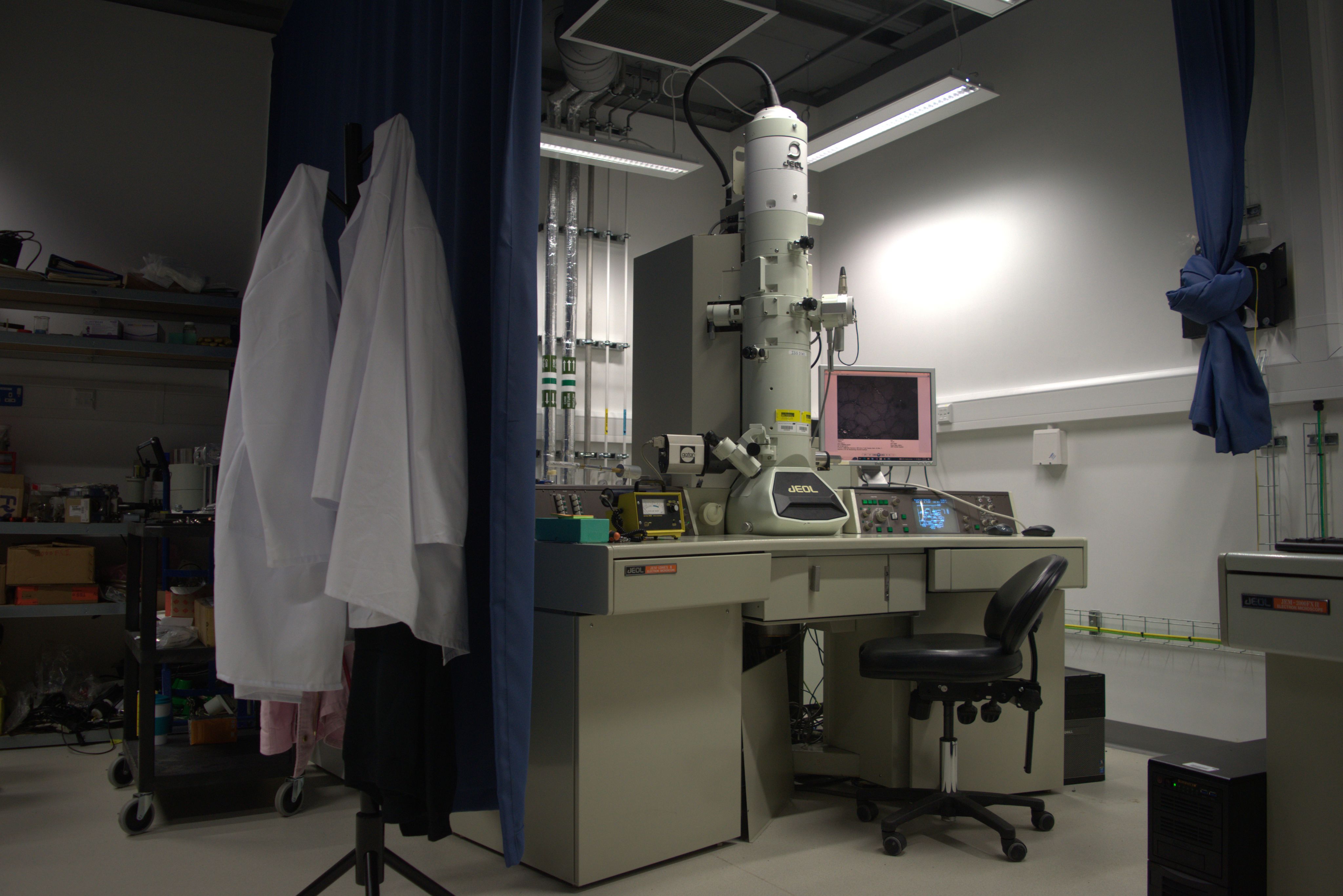
Elizabeth's laboratory at the MRC LMB
Elizabeth's laboratory at the MRC LMB
In a darkened lab in south Cambridge, a high-voltage gun is firing electrons through a squid brain. The brain has been sliced with a diamond knife to a thickness of 40 nanometres, far smaller than the width of a human hair. After being injected with heavy metals, the brain slice now resembles a mineral.
Light passes through the brain slice on its way through a 2-metre-tall metal column. At the bottom of the column, intricate patterns of light and dark form on a camera’s eye.
This is an electron microscope, revealing a miraculous map of neurons within that slice of squid brain.
By imaging animal brains in infinitesimal detail, researchers hope to uncover the secrets of brain structure, and how we are able to change in response to our environment. The potential benefits of such ‘brain roadmaps’ are huge. With a thorough understanding of brains, we could offer revolutionary treatments for neurological disease, reveal the inner lives of the creatures around us, and make better blueprints for constructing our own intelligent systems. The problem is in mapping such intricate territory.
Across the world, there are only 3 labs attempting to use electron microscopes for work like this. The woman at the helm of this microscope is Dr Elizabeth Barsotti. She has a brain that fires out ideas in rapid bursts, and a voice straight from the mountain west of Wyoming.
Barsotti's brains
An engineer in a former life, Barsotti transitioned to neurobiology during the pandemic, after a Cambridge researcher recognised her skill in imaging rocks on specialised microscopes.
“Professor Albert Cardona reached out to me. He told me that if I was willing to teach myself neuroscience, then he’d bring me to Cambridge,” Barsotti says.
After schooling herself on neuroscience textbooks during lockdown, Barsotti made it to Cambridge, where she is currently a Career Development Fellow in the Cardona group at the MRC Laboratory of Molecular Biology (MRC LMB). She is also a Visiting Postdoctoral Research Scientist in the Department of Physiology, Development and Neuroscience and an Affiliated Postdoc at Clare Hall.
Last year, Barsotti was part of the team that published a seminal study of the fruit fly larva, featuring the first ever connectome of an insect brain. The ‘connectome’ is a complete map of a brain’s neuronal and synaptic connections: this study was the largest complete connectome to have ever been mapped. The study gave clues as to how information flows through the brain, and how this leads to behaviour. It also hinted at better ways we could design deep learning architecture in artificial systems.
At the MRC LMB, Barsotti is standing on the shoulders of giants. It was here that Sydney Brenner started the discipline of connectomics in 1986, publishing the complete set of synaptic connections in the nervous system of an animal for the first time.
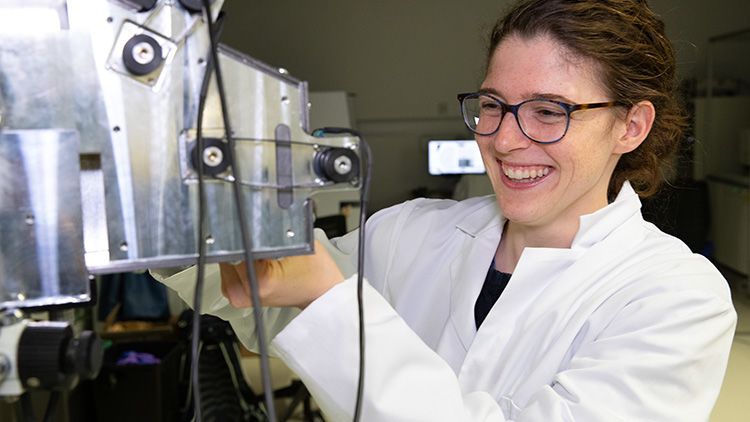
Elizabeth in her lab
Elizabeth in her lab
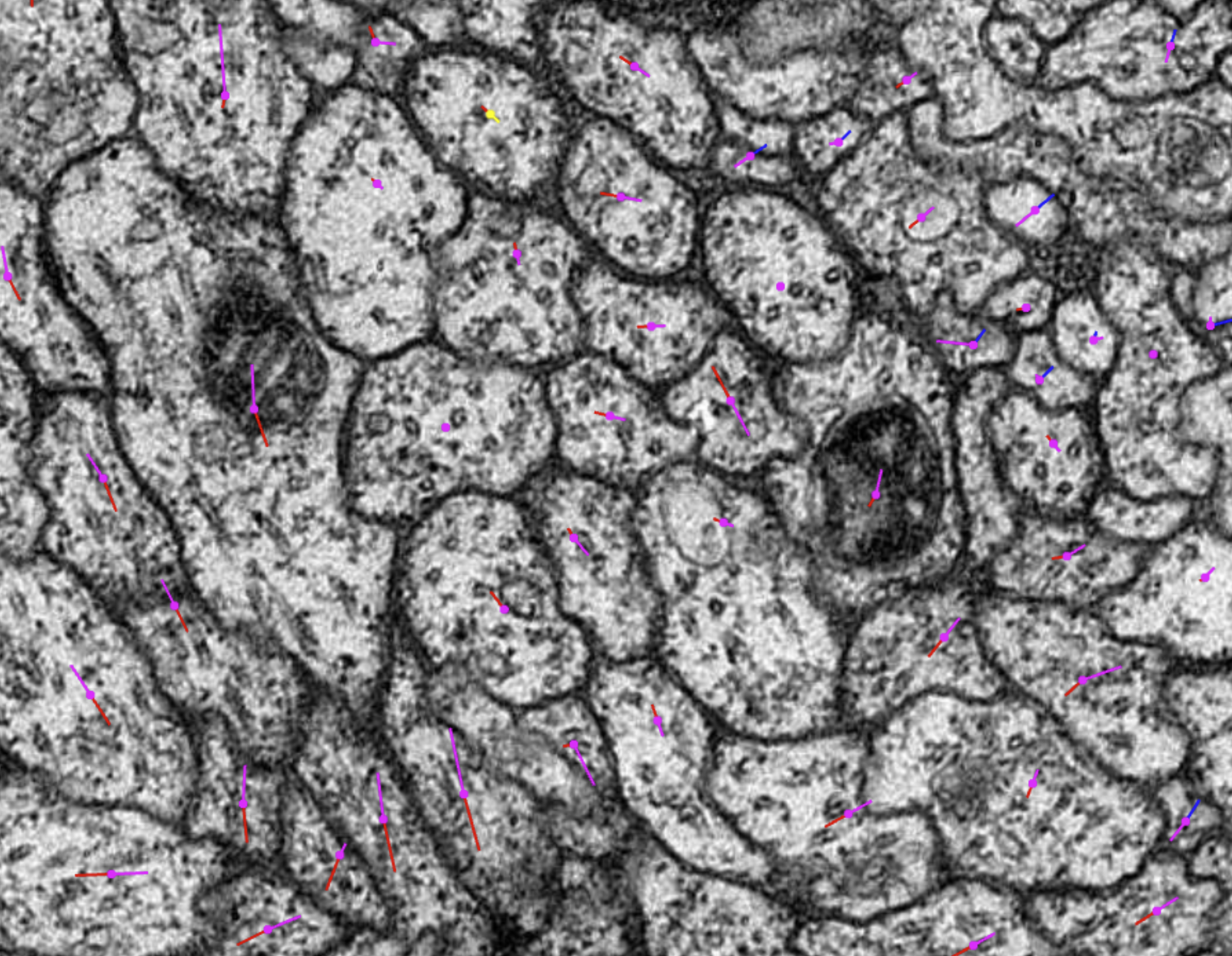
A single slice of maggot brain captured in the electron microscope. Each of the dots denotes the approximate geometric centre of a single neuron. The dots were placed by hand – the team do this for thousands of neurons in thousands of slices.
A single slice of maggot brain captured in the electron microscope. Each of the dots denotes the approximate geometric centre of a single neuron. The dots were placed by hand – the team do this for thousands of neurons in thousands of slices.
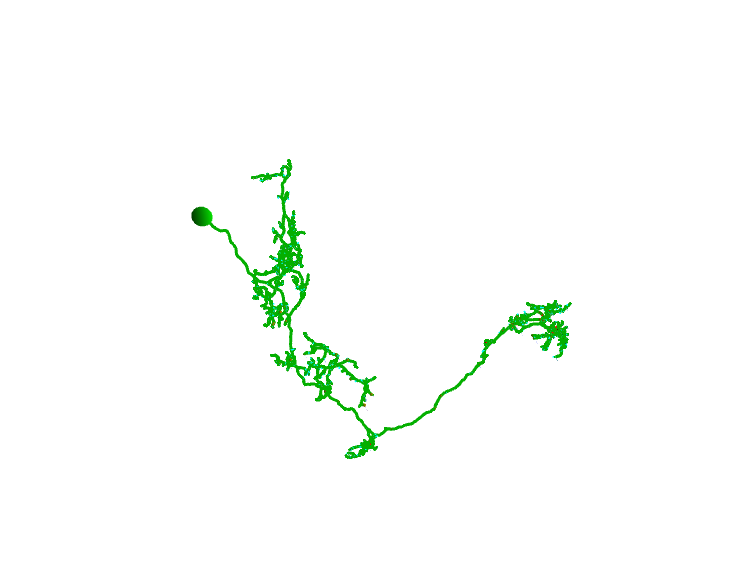
An example of a reconstructed neuron.
An example of a reconstructed neuron.
The holy grail
“The fruit fly larva was great, but that's just one brain, right?” Barsotti smiles. “Now what we're doing is taking images of lots more brains, from animals that were raised under different conditions, to try to generate a general brain map across species.”
In starting with smaller brains, scientists hope that many findings can be applied to humans - much like how the pharmaceutical industry uses animal trials to make successful human therapies. But while smaller brains are a good place to start, they are still unfathomably complex.
“The fruit fly brain took ten years to image and analyse,” Barsotti says. “The lizard brain will take another decade just to image. How long it takes to analyse depends on the progress we’re able to make.
“The human brain is the holy grail, to understand on a cellular level what every single neuron and synapse does. But with our current technology, it would take more than 1,000 years to fully map one human brain.
“We’d like to understand, evolutionarily, what is conserved in different animal brains. How do different brain parts relate to your habitat or size? Or whether you’re predator or prey?
“In order to do this, we have to ask ourselves: what are the most ethical animals we can study to gain an understanding of the human brain?”
Even small animal brains are humbling in their complexity. These seemingly simple creatures harbour dense, interwoven and responsive networks in their heads. Consider how difficult it would be to fully map the connections in a single mouse brain. Barsotti estimates that the data storage infrastructure alone would cost over a billion pounds. Teams of engineers, developers and researchers would be needed to process the petabytes of data produced - all to map the brain of something Robert Burns described as a ‘poor beastie’.
When Barsotti was scouring those neuroscience textbooks, she came across explanations of the human brain that emphasised our unique cleverness. In her latest work, she’s not so sure.
“If you look at the fly brain in very high resolution, you see it has a lot of these recurrent connections - connections responsible for learning, memory and navigation - that we assumed were unique to humans. These creatures are actually very smart.”
In addition to these ethical complications, scientists have to deal with a thorny thicket of practicalities. When mapping takes such a long time, the risk of failure is extended and painful. Believe it or not, Cambridge researchers are human - they make mistakes. Blurred images or lost sections in a sample could make it impossible to complete a full map, but those mistakes could take 10 years to come to light. With so few labs currently doing this work, there’s no back up.
“I would love there to be 100 labs doing this work, not just 3!” Barsotti says.
Run the tape
Advances in artificial intelligence could soon accelerate the job of imaging, tracing and analysing animal brains. For now, the painstaking job of recording brains frame by frame gives Barsotti plenty of time to think.
“Once we fully map the brains of many different animals, we could create a model of how evolution impacts brain structure. Then, instead of being constrained by the slow pace of evolution, we could artificially move generations forwards on a computer.
“Based on the trends we find between current animals, we could predict what brains might look like in the future. Could we leap forward 100,000 years? That'd be amazing.”
Barsotti is doing her part in speeding up this intimidating process. She has made helpful robots that can scale the side of her microscope’s column, serving up successive frames of squid brain for the electron beam to have a go at.
“It works just like an old school movie theatre projector. You put thousands of your slices onto special tape. You roll the tape up on the wheel, and the robot passes it through the microscope.”
To further speed up this mammoth project, the cost of technology needs to be significantly decreased. The microscope’s special tape currently costs £30,000. The cameras at the bottom run to over £200,000. While Harvard, Cambridge and the world’s other top universities can accommodate these costs, other labs can’t. Making the necessary equipment cheaper and more accessible is part of Barsotti’s hopes for the near future. She wants her work at Cambridge to be an inspiration and a catalyst to allow more people to enter this important field.
Progress is being made. In the near future, collaborators at MRC LMB and the University will reveal the first map of every neuron in an adult fruit fly brain, as well as a connectome of its nerve cord. These are essential steps in a multi-decade mission.
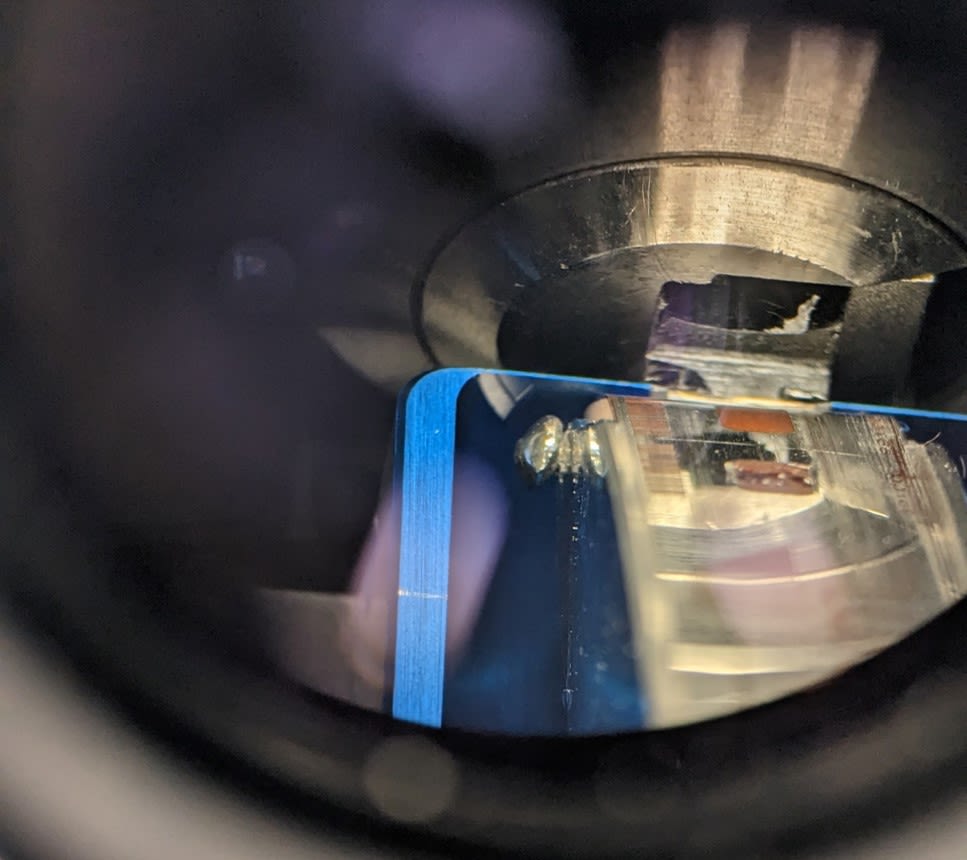
A slot on the special tape, as Elizabeth slices a piece of lizard brain onto it.
A slot on the special tape, as Elizabeth slices a piece of lizard brain onto it.
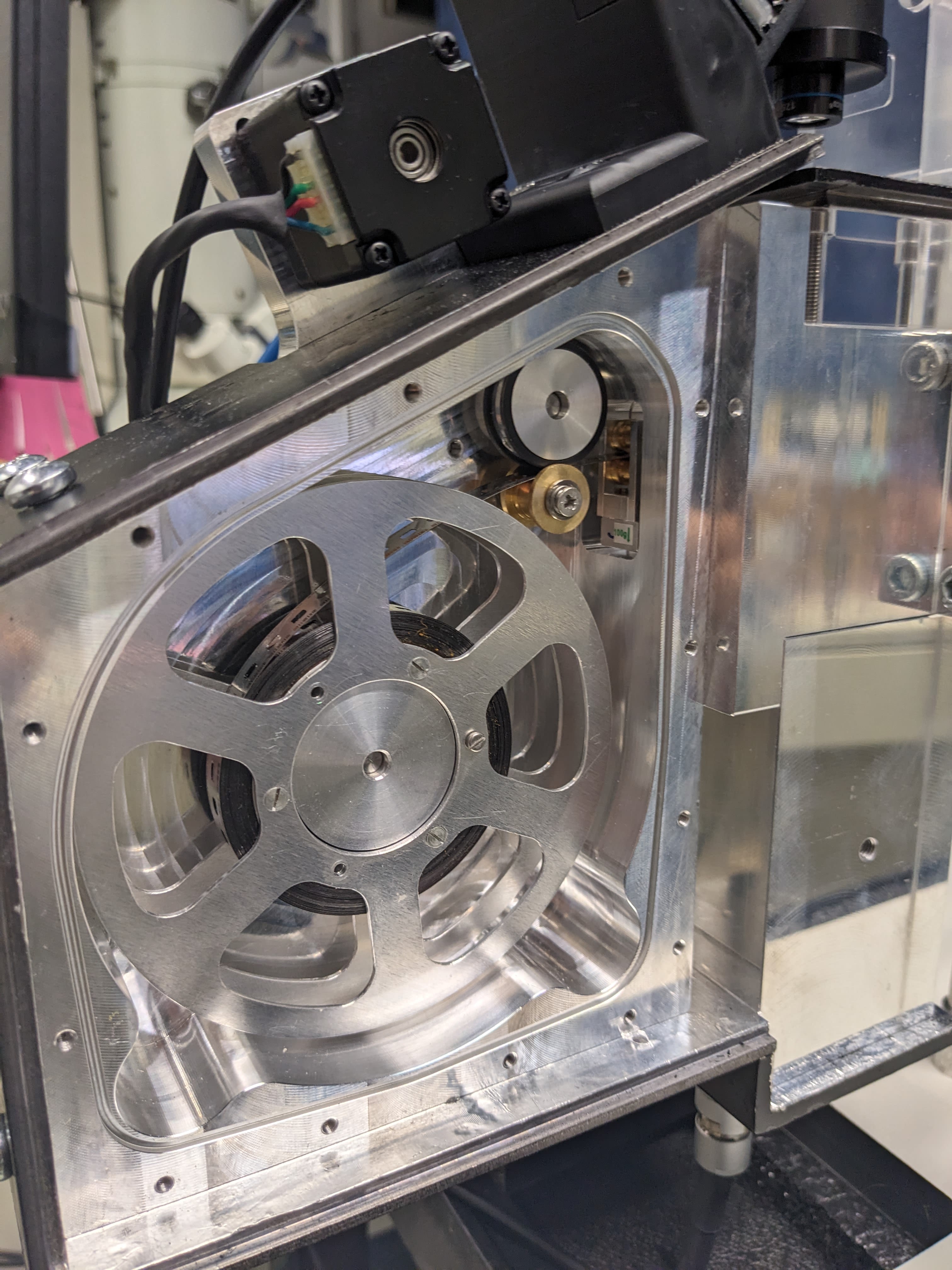
The prepared tape on the reel that passes it through the electron microscope.
The prepared tape on the reel that passes it through the electron microscope.
The mission
“I’m incredibly lucky. I’m an engineer who gets to work on so many cool biological questions. I never thought I’d get to do this in a million years. This project spans so many different fields: software, machine learning, biology, ethics. My colleagues at MRC LMB are working on projects straight out of science fiction. Cambridge is full of so many smart people, it’s like a playground for science.
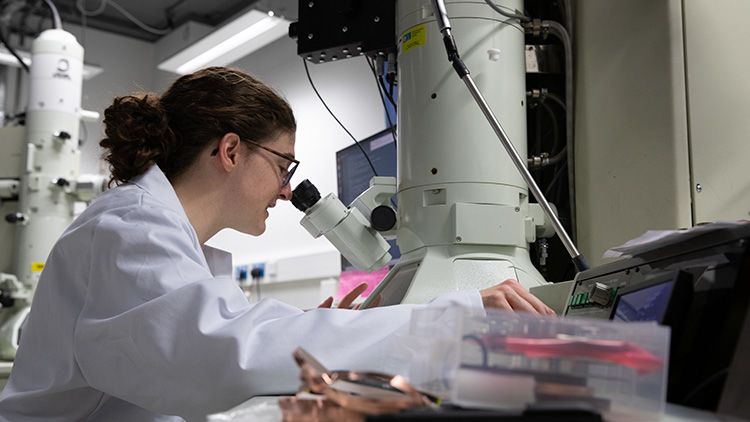
Elizabeth using her microscope
Elizabeth using her microscope
“This work is extremely important. I want to inspire more people to come and work on this. If we want to get to the human brain, we need as many people as possible.”
Fully unravelling the secrets of our brains will take patience, delicate skill, and new ideas from across many branches of science. Along the way, we’ll discover commonalities between our species and other living creatures, and know ourselves more profoundly. It is a journey whose destination could surpass our wildest speculations. The race is on.
Published on 13 June 2024
The text in this work is licensed under a Creative Commons Attribution-NonCommercial-ShareAlike 4.0 International License

